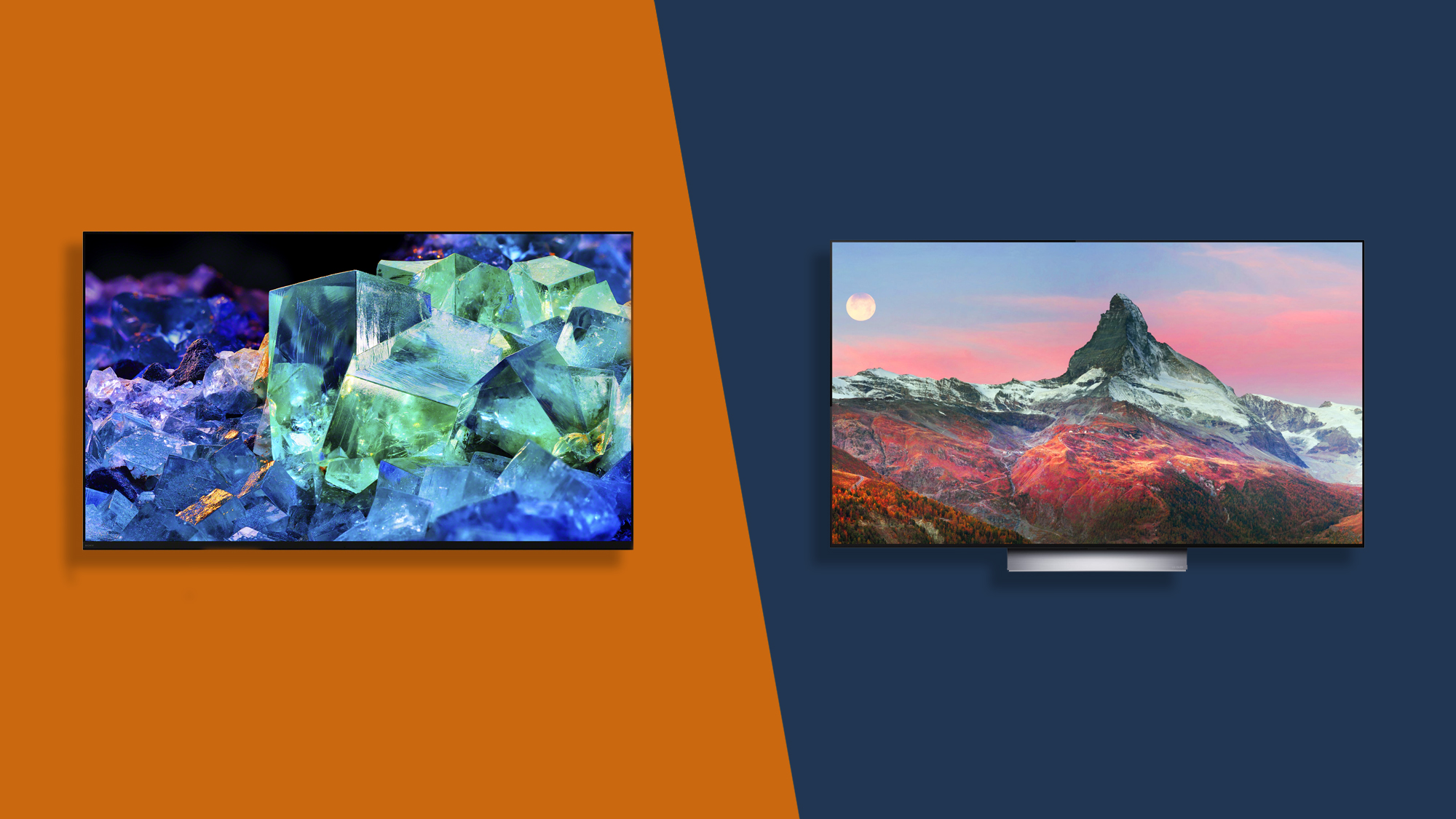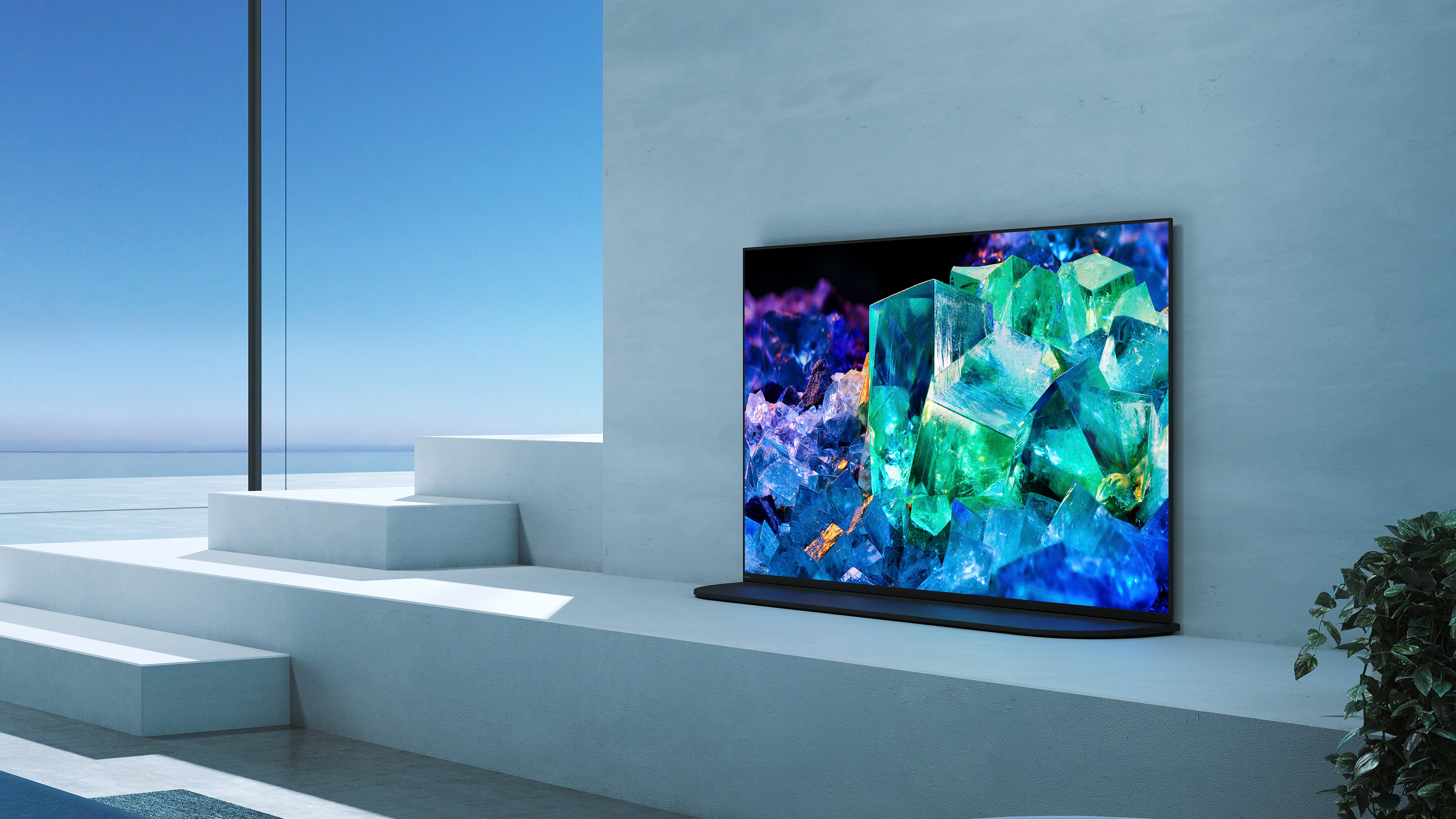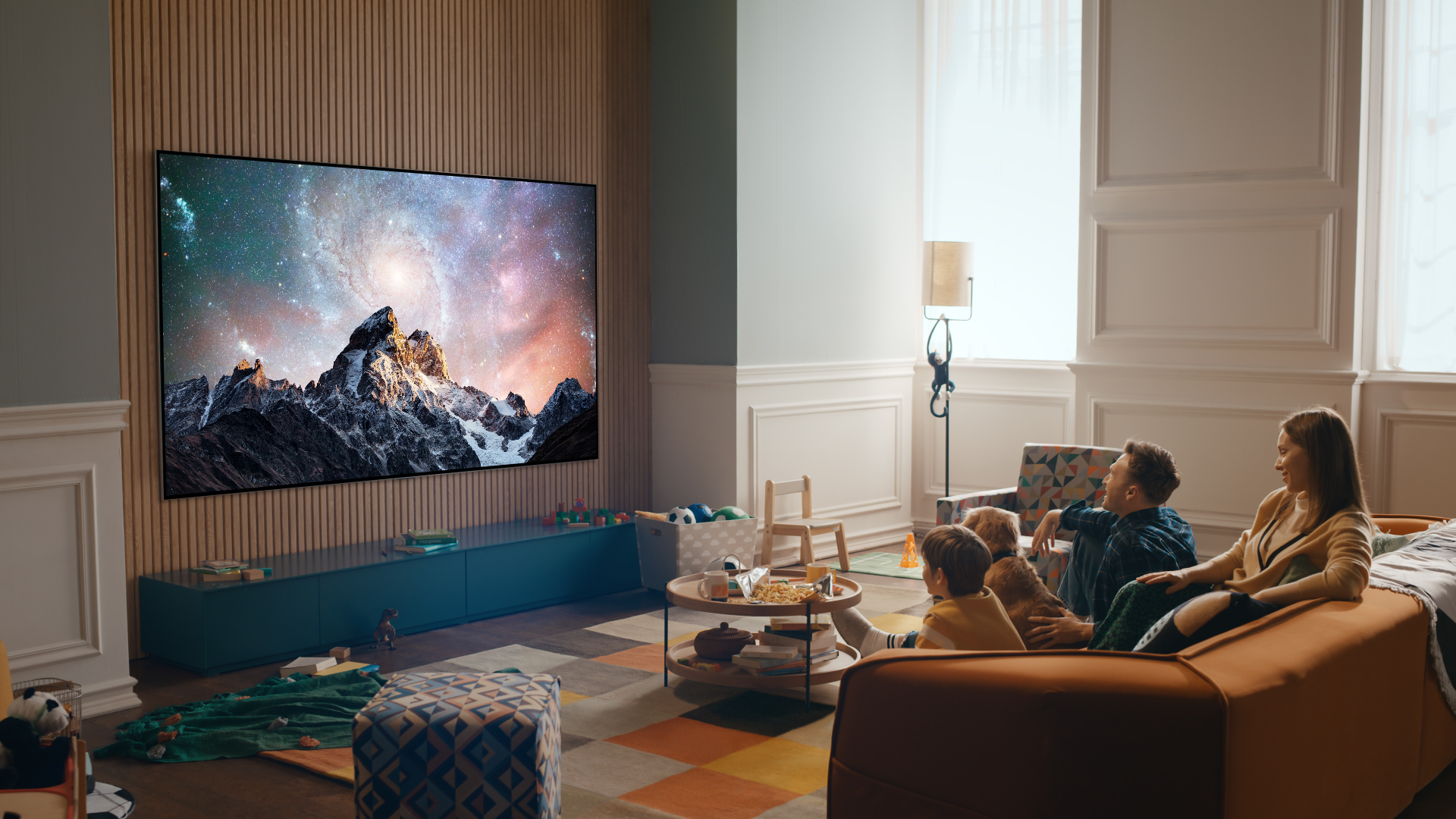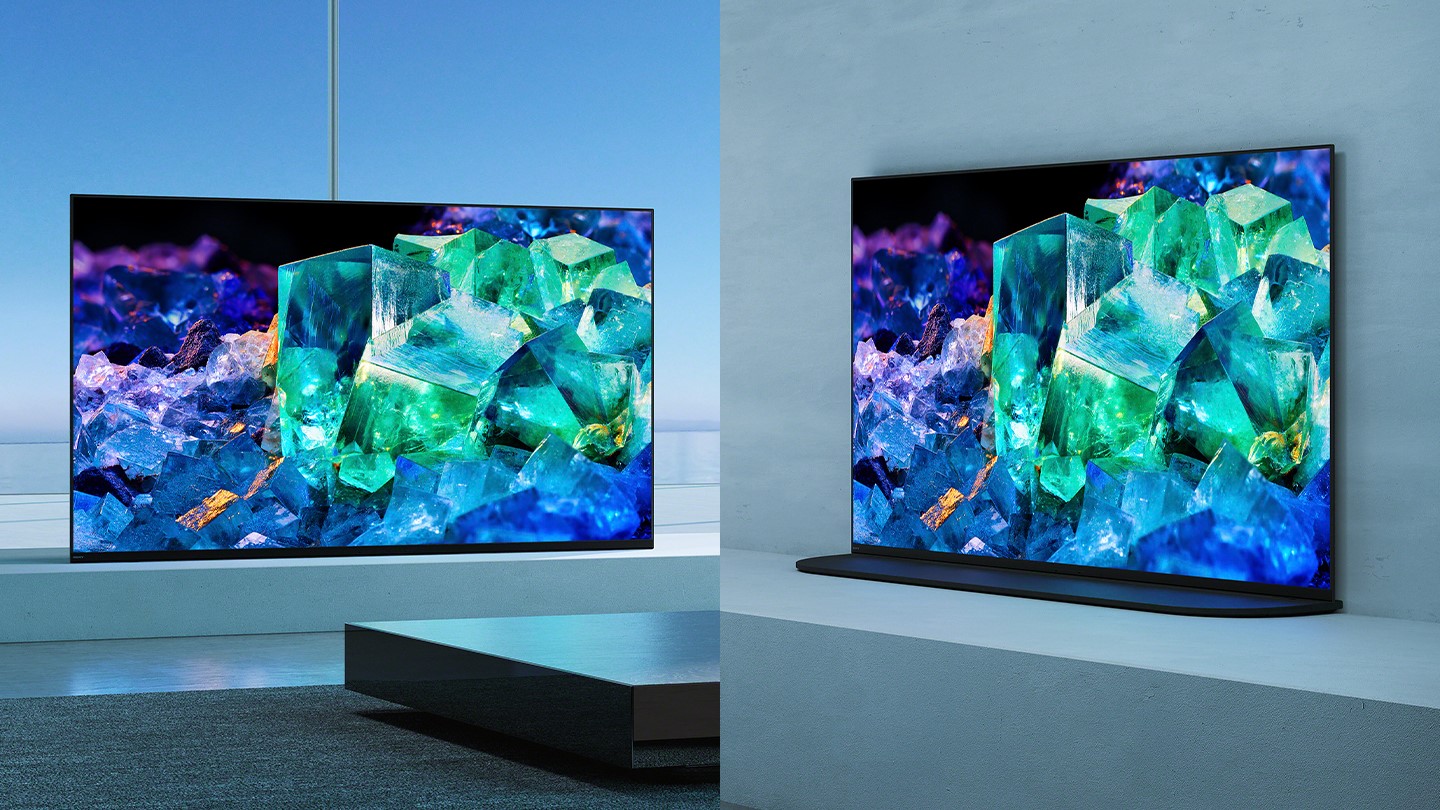QD-OLED vs OLED TVs: what’s the difference?
The new TV display combines the inky blackness of OLED with the punchy brightness of QLED

OLED TVs are generally regarded as the best TVs you can buy today, but now there’s a new panel technology in town in the shape of QD-OLED. What is QD-OLED – also called QD Display? Why do we need it? How much will a QD-OLED TV cost and is it time to start thinking about upgrading from ‘old’ OLED to ‘new’ QD-OLED already?
It’s not that simple. QD-OLED is a new TV technology. The QD stands for quantum dot and OLED for organic light-emitting diode.
Although OLED TVs are superior in terms of inky blacks and contrast, they’re not quite as bright as the quantum dot-laden QLED TVs. At the heart of the QD-OLED concept is an effort to make OLED TVs brighter, which in turn means more colour in the brightest areas of images (color volume) so more depth.
In short, QD-OLED technology is an attempt to make a TV that’s brighter and more colorful than a regular OLED TV while retaining the technology’s reputation for the blackest of blacks.
Are QLED displays dead in the water? Since their only manufacturer, Samsung Display, is the one behind QD-LED, it seems so, though supply issues means QLED likely won’t be killed off just yet.
So, how do QD-OLED displays work, when will they go on sale and how much will they cost? Here’s everything you need to know about QD-OLED technology.

QD OLED vs OLED: price and availability
The first QD-OLED TV is due to go on sale probably in April or May 2022 from Sony in the form of its Master Series A95K, the first commercially available QD-OLED TVs, which will come in both 55-inch (Sony XR-55A95K) and 65-inch (Sony XR-65A95K) sizes. Both will be 4K/120fps TVs with HDR and Google TV, built-in webcam and powered by Sony’s Cognitive Processor XR.
Get daily insight, inspiration and deals in your inbox
Sign up for breaking news, reviews, opinion, top tech deals, and more.
Sony claims both sets will provide unprecedented color and pure black contrast. They sound prohibitively expensive, right? Maybe not. The early indications are that these first QD-OLED TVs could be surprisingly affordable, at least when compared to expectations. It’s not official, but there’s some evidence that Sony will sell the XR-55A95K for $3,000 (around £2,210 / AU$4,980) and the XR-65A95K for $4,000 (around £2,950 / AU$7,580).
Although it’s yet to announce specific products or launch dates, Samsung Display showcased three types of what it called its QD Displays at CES 2022: 55-inch and 65-inch panels for TVs (the latter the winner of a ‘Best Of Innovation: Video Displays’ award at CES 2022) and the Samsung Odyssey G8QNB 34-inch computer monitor panel.
Details are scant, but we do know the QD-Display TVs have four HDMI 2.1 inputs and run on Samsung’s 2022 Neo Quantum Processor. Dell’s Alienware 34-inch curved quantum dot OLED gaming monitor was also unveiled at CES 2022 and appears to cost $1,299 (around £960, AU$1,820), which is high … but hardly astronomical.
The real issue could be availability, with Samsung reported to be struggling with a low yield (read: high failure rate) of QD Displays since it began production in November 2021. Since the Sony Master Series A95K is based on QD-OLED displays made by Samsung the low yield is a major issue that will determine whether QD-OLED has a mainstream future.
Expect them to be in short supply through 2023 … unless LG Display makes a surprise announcement about its own QD-OLED innovations, something the company’s been silent about so far.

QD OLED vs OLED TVs: how they work
QD-OLED is basically a combination of the high points of both OLED and QLED technology. Traditional OLED panels have been revolutionary in TV land during the last decade because of their self-emissive pixel structure; each pixel glows of its own accord when an electric current is passed through.
While LCD and LED TVs struggle with contrast because of their always-on backlights or clusters of LEDs to illuminate images, an OLED TV can produce an image that simultaneously contains both ice-white pixels and true black pixels. Cue claims of ‘infinite’ contrast from the only manufacturer of OLED panels, LG Display.
To increase their peak brightness – the tech’s slight disadvantage – LG Display created the WOLED technique; a white sub-pixel is added to the usual red-green-blue mix. It makes the image brighter, but it lacks maximum color volume in the very brightest areas of images. Crucially, it’s not something a viewer would ever notice.
QLED TVS – manufactured solely by Samsung – don’t create deep blacks like OLED does, but they are brighter thanks to their use of quantum dots. Cue brighter, and therefore more accurate, color reproduction that is ideal for HDR content.
So why not combine the two? QD-OLED displays are basically OLED displays that use a blue (because blue has the strongest light energy) self-luminescent layer that has a new film of quantum dots overlaid (in place of LG’s white sub-pixel). QD-OLED TVs are being manufactured by Samsung Display, which it describes as the world’s first RGB self-emitting quantum dot OLED display (there’s actually no official name for tech as yet).

QD-OLED vs OLED TVs: image quality
So if QD-OLED TVs combine the infinite contrast of OLED TVs and the punchy brightness and color volume of QLED TVS then they’re bound to be perfect, right? We won’t know that for sure until the first review samples come our way – and we’re always skeptical about first-generation new technology.
Sony claims that its Master Series A95K TVs achieves a wider color gamut and delivers ‘up to’ 200% as much color brightness as conventional OLED TVs. Since 'up to’ has no useful meaning, it’s really hard to tell.
There could be other advantages to QD-OLED. According to Samsung Display, its QD Displays excel with HDR, luminance and a wide viewing angle. On the latter, the company claims that its QD Display achieves a more uniform brightness and retains 80% of that brightness when viewed from the sides at a 60-degree angle. It also claims that its 34-inch computer monitor QD Display has a response time of 0.1ms, which suggests that QD-OLED TVs could be ultra-low latency with faster response times and less motion blur when compared to standard OLED TVs.
Adding quantum dots could bring a disadvantage. While OLED TVs have often been accused of being vulnerable to screen retention (commonly called ‘screen burn’) over long periods, on QD-OLED displays it’s possible that individual LEDs could retain a color for longer than required. Or some of the LEDs could burn-out to become a ‘hot pixel’ on the TV.
It remains to be seen, but don’t be surprised if LG Display comes out with more advanced OLED panels (as it did in 2021 with the brighter OLED evo panels found on the LG G1 Gallery OLED TV) and dampens the enthusiasm for QD-OLED.

Takeaway
Is QD-OLED the next frontier in home entertainment and gaming? Does its mixture of quantum dots and self-emissive pixels create an entirely new viewing experience, as Sony claims?
That all remains to be seen, with the possibility that QD-OLED’s color volume will appeal to home cinema aficionados and its low-latency to gamers. Either way another marketing war appears to be imminent in which Samsung and LG will be the key players in a battle to convince us who has the best next-gen OLED TV.
If you’re in the market for the best OLED TV right now LG’s upcoming C2 and G2 TVs still look to be in pole position, but in the longer term we may see a changing of the guard if Samsung can smoke its rival with QD-OLED TVs.
That’s great news. All this latest tech battle really means is that by about 2024, the TV market will become a de facto market for ever improving OLED TVs. That’s a win for all of us.
- Read our guide on the best TVs for gamers
Jamie is a freelance tech, travel and space journalist based in the UK. He’s been writing regularly for Techradar since it was launched in 2008 and also writes regularly for Forbes, The Telegraph, the South China Morning Post, Sky & Telescope and the Sky At Night magazine as well as other Future titles T3, Digital Camera World, All About Space and Space.com. He also edits two of his own websites, TravGear.com and WhenIsTheNextEclipse.com that reflect his obsession with travel gear and solar eclipse travel. He is the author of A Stargazing Program For Beginners (Springer, 2015),
